
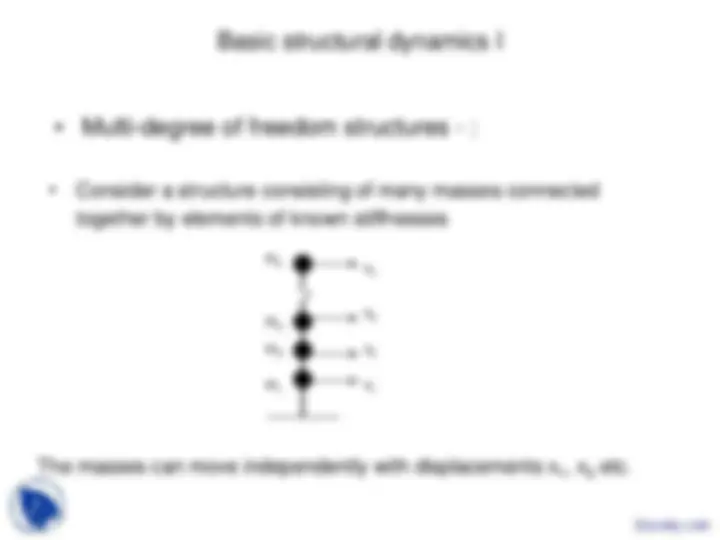
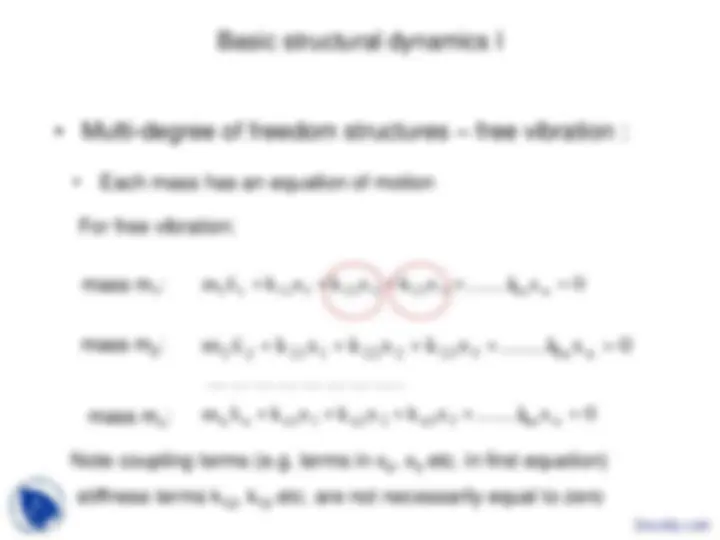
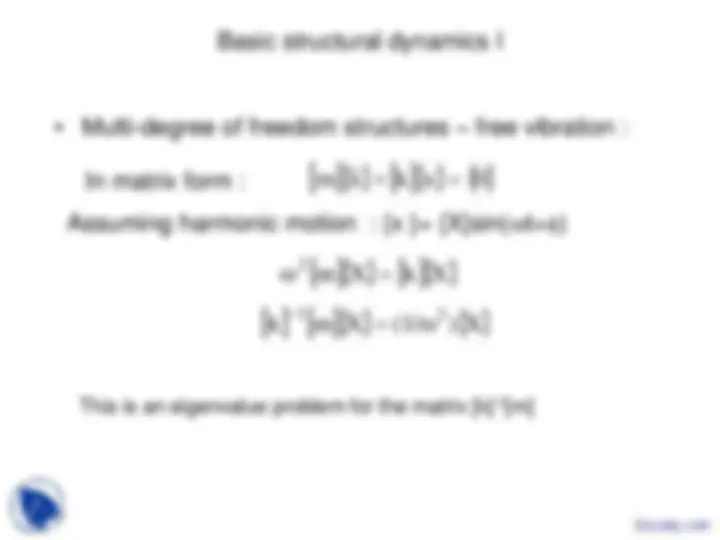
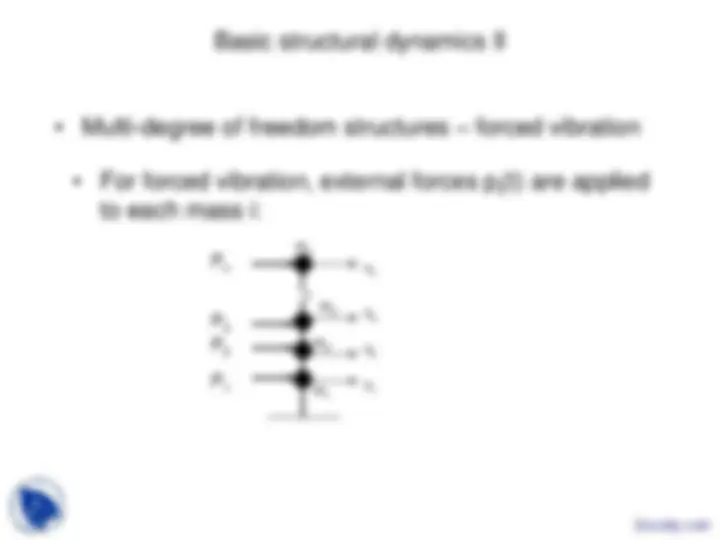
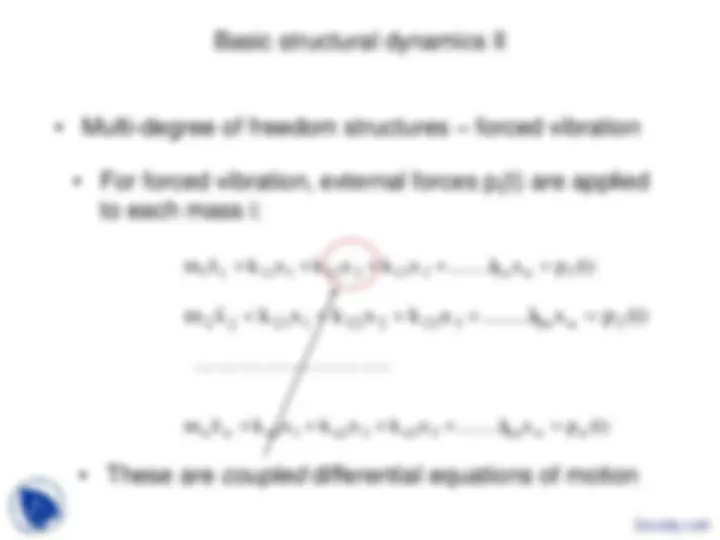
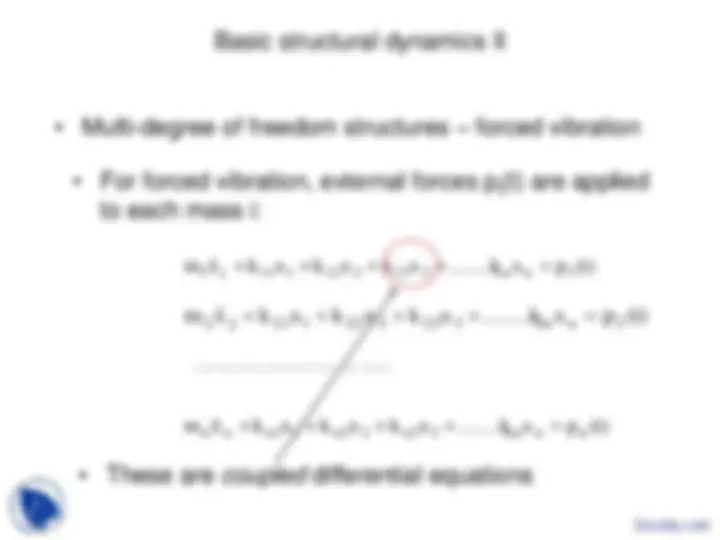
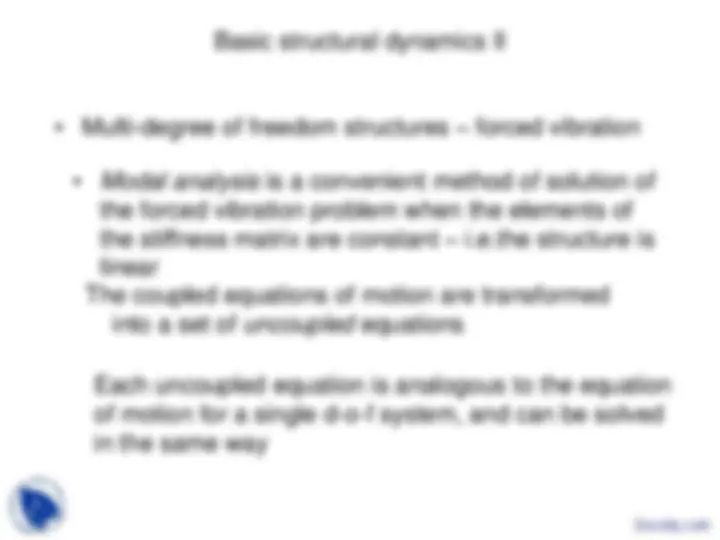
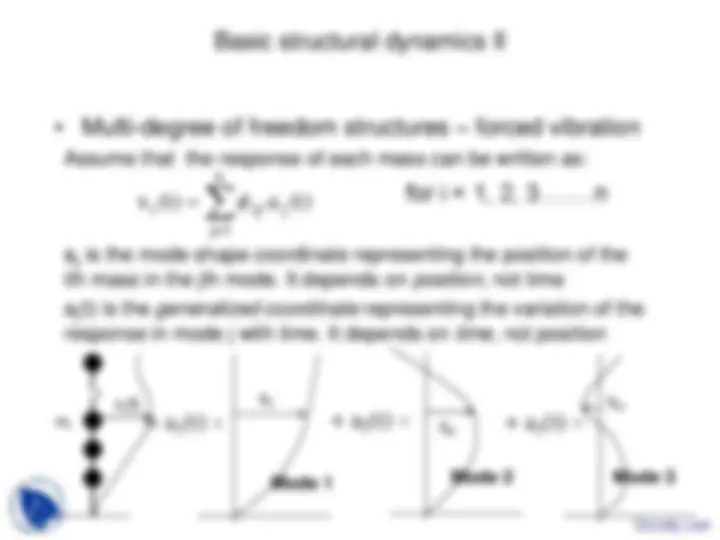
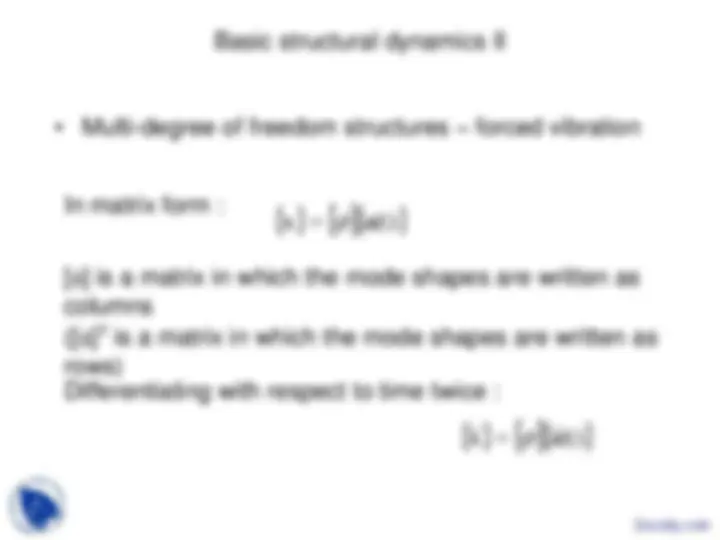
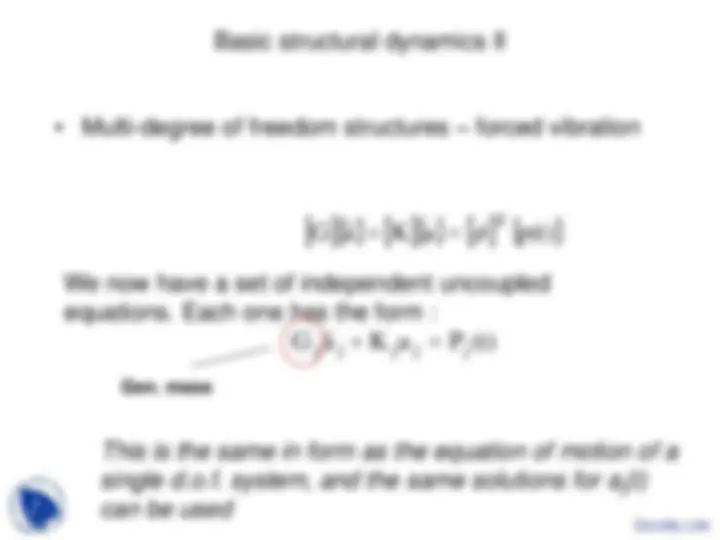
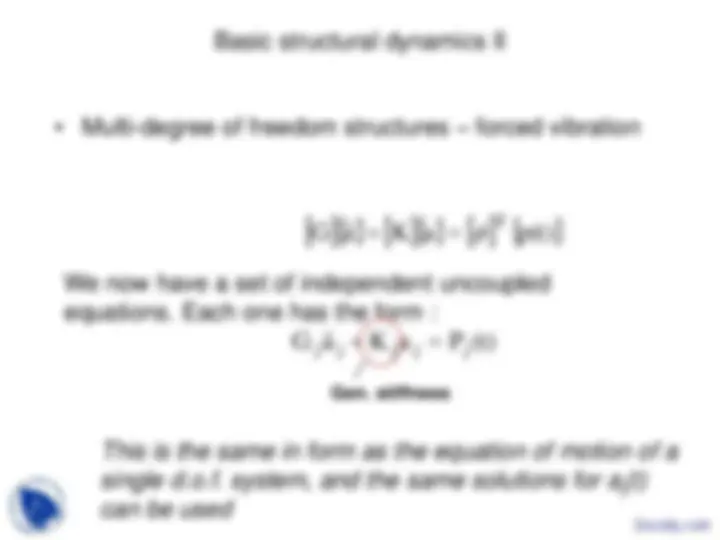
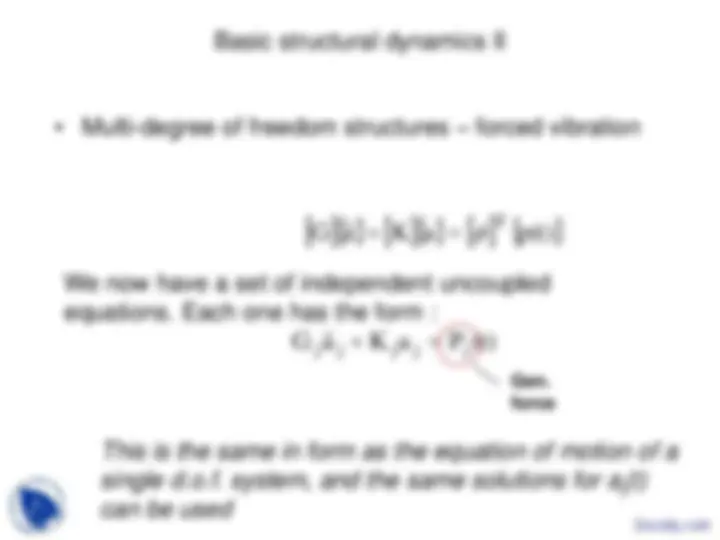
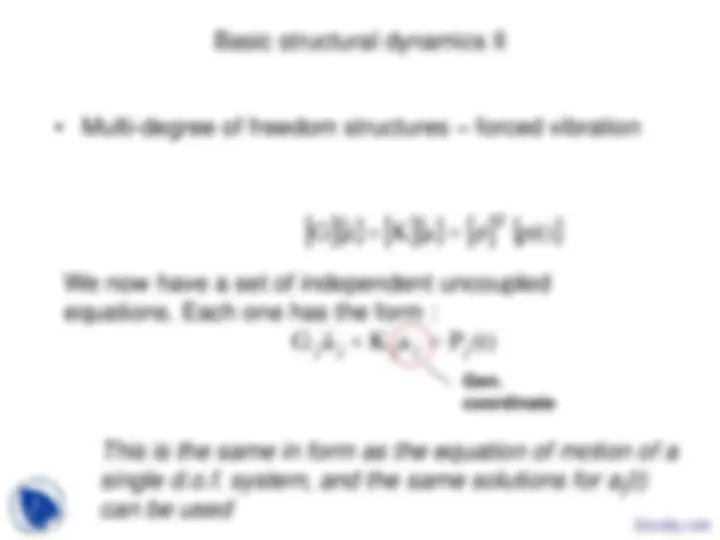
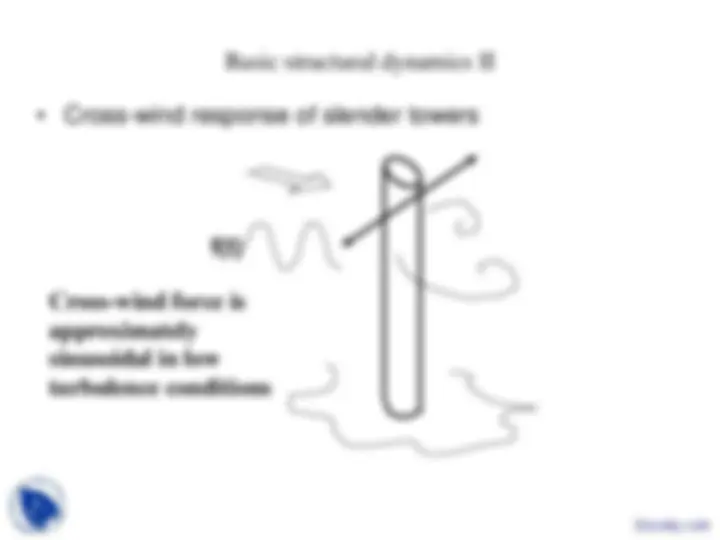
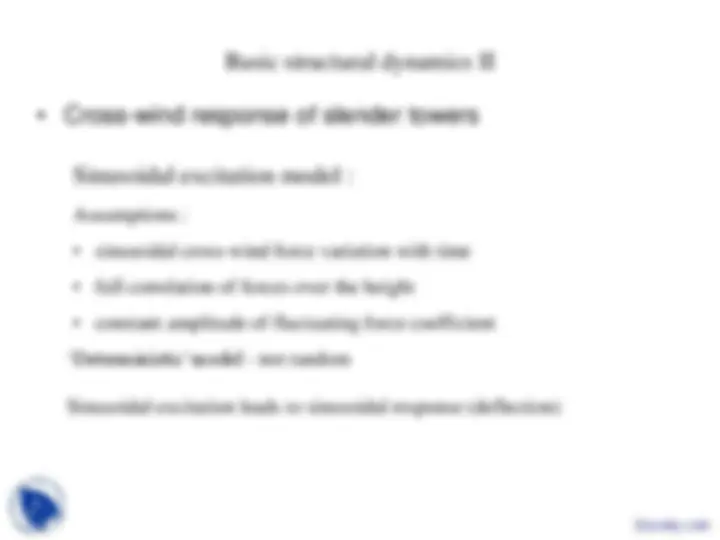
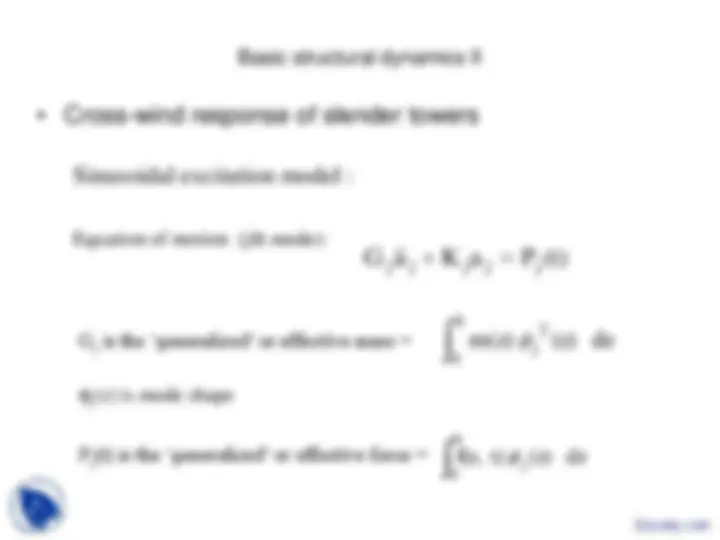
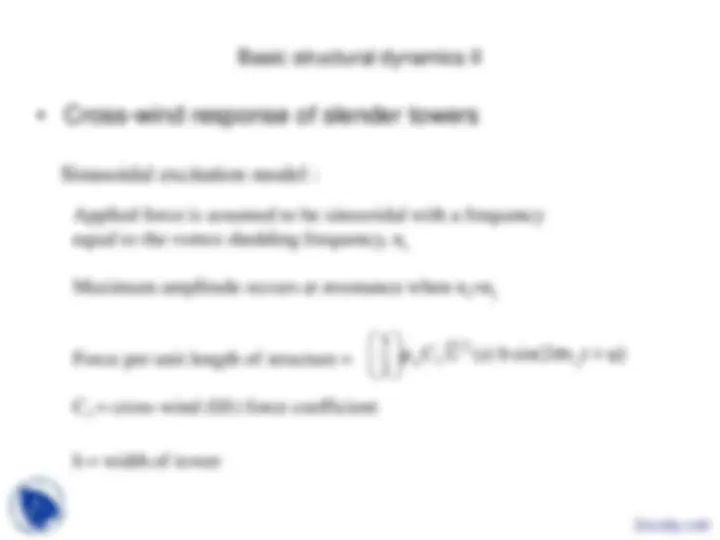
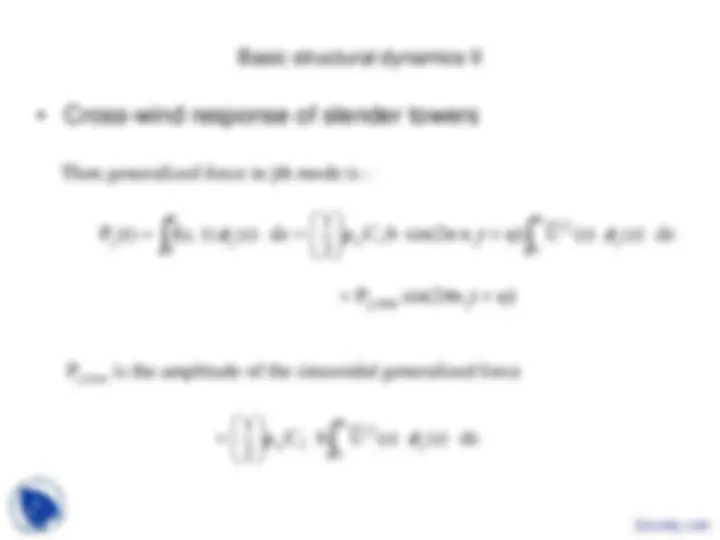
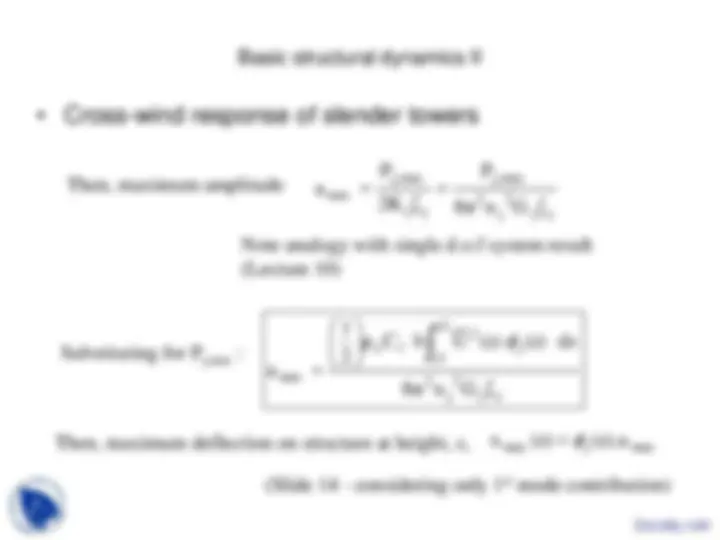
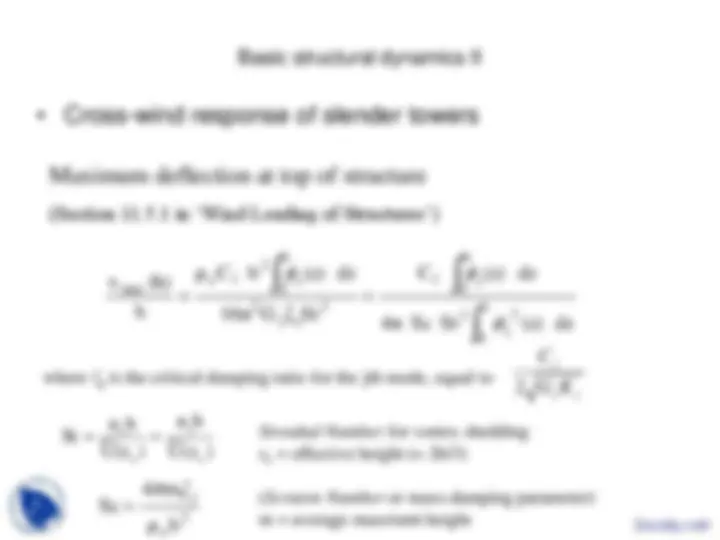


Study with the several resources on Docsity

Earn points by helping other students or get them with a premium plan


Prepare for your exams
Study with the several resources on Docsity

Earn points to download
Earn points by helping other students or get them with a premium plan
Community
Ask the community for help and clear up your study doubts
Discover the best universities in your country according to Docsity users
Free resources
Download our free guides on studying techniques, anxiety management strategies, and thesis advice from Docsity tutors
Some concept of Wind Engineering are Aeroelastic Effects, Along-Wind Dynamic Response, Antennas and Open-Frame Structures, Atmospheric Boundary Layers and Turbulence, Atmospheric Boundary, Basic Bluff-Body Aerodynamics. Main points of this lecture are: Basic Structural Dynamics, Sinusoidal Excitation, Random Excitation, Freedom Structures, Dynamics of Structures, Structural Dynamics, Structural Dynamics, Freedom System, Expressed As Percentage, Damping to Critical
Typology: Slides
1 / 28

This page cannot be seen from the preview
Don't miss anything!





















Basic structural dynamics I
For free vibration:
m 1 x 1 k 11 x 1 k 12 x 2 k 13 x 3 .......k1nxn 0
m 2 x 2 k 21 x 1 k 22 x 2 k 23 x 3 .......k2nxn 0
m (^) n xn kn1x 1 kn2x 2 kn3x 3 .......knnxn 0
mass m 1 :
mass m 2 :
mass mn:
Note coupling terms (e.g. terms in x 2 , x 3 etc. in first equation) stiffness terms k 12 , k 13 etc. are not necessarily equal to zero
Basic structural dynamics I
In matrix form : Assuming harmonic motion : {x }= {X}sin(t+)
This is an eigenvalue problem for the matrix [k]-1[m]
Basic structural dynamics I
Number of modes, frequencies = number of masses = degrees of freedom
Mode 2
m 1
m 2
m 3
mn
m 1
m 2
m 3
mn
Mode 1 Mode 3
m 1
m 3
mn
m 2
m 1
m 2
m 3
mn
x 1
xn
x 3 x 2
Pn
P 3 P 2 P 1
m 1 x 1 k 11 x 1 k 12 x 2 k 13 x 3 .......k1nxn p 1 (t)
m 2 x 2 k 21 x 1 k 22 x 2 k 23 x 3 .......k2nxn p 2 (t)
m (^) n xn kn1x 1 kn2x 2 kn3x 3 .......knnxn pn(t)
m 1 x 1 k 11 x 1 k 12 x 2 k 13 x 3 .......k1nxn p 1 (t)
m 2 x 2 k 21 x 1 k 22 x 2 k 23 x 3 .......k2nxn p 2 (t)
m (^) n xn kn1x 1 kn2x 2 kn3x 3 .......knnxn pn(t)
Each uncoupled equation is analogous to the equation of motion for a single d-o-f system, and can be solved in the same way
for i = 1, 2, 3…….n
mi
xi(t)
aj(t) is the generalized coordinate representing the variation of the response in mode j with time. It depends on time , not position
Assume that the response of each mass can be written as:
ij is the mode shape coordinate representing the position of the ith mass in the jth mode. It depends on position , not time
n
j 1
xi (t) ij.aj(t)
i = a 1 (t)
Mode 1
Mode 2
i
Mode 3
By substitution, the original equations of motion reduce to:
The matrix [G] is diagonal, with the jth term equal to :
The matrix [K] is also diagonal, with the jth term equal to :
Gj is the generalized mass in the jth mode
2 ij
n
i 1
j
2 j
2 ij
n
i 1
i
2
The right hand side is a single column, with the jth term equal to :
Pj(t) is the generalized force in the jth mode
n
i 1
ij
T
We now have a set of independent uncoupled equations. Each one has the form :
G a K a T p(t)
Gen. stiffness
This is the same in form as the equation of motion of a single d.o.f. system, and the same solutions for aj(t) can be used Docsity.com
We now have a set of independent uncoupled equations. Each one has the form :
This is the same in form as the equation of motion of a single d.o.f. system, and the same solutions for aj(t) can be used
G a K a T p(t)
Gen. force